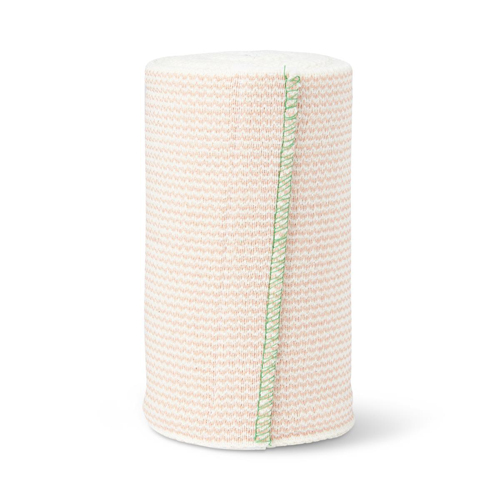A compression or elastic bandage is used for different health issues. These bandages are a common part of the first aid box and are considered the basic bandage.
These bandages are used temporarily for circulation and sprains. Using this bandage could be long-term if there is a problem of blood clot formation and circulation issues.
What is a Compression bandage?
A compression bandage is a long stretchable cloth used for sprains and strains. Also known as a Tensor bandage, this bandage applies a little pressure on the affected part and helps reduce swelling. Elastic sleeves are the same thing that can be pulled over to the affected region.
These bandages are not expensive but commonly available at drugstores and online at affordable rates.
When to Use a Compression Wrap?
Elastic compression bandages are used for several health issues, such as:
Blood Flow IssuesIndividuals having circulation problems require ace bandages. These bandages improve blood circulation from the feet to the heart.
The problem arises when there is difficulty in circulating the blood back to the heart from the leg. In such a case, the compression from this bandage helps and is great for individuals with compression problems.
Issues in Lymphatic System
Any issue in the lymphatic system can lead to the problems like leg ulcers and others. Varicose veins and venous leg ulcers are the issues that can be solved by using compression bandages. It pressures the affected veins, forcing the blood back into the deep vein system.
- Ankle Injury
A compression bandage could be the best solution if you get a sprained ankle and your foot is swollen. An application can reduce swelling and enhance the healing process.
- Lymphoedema
This is a condition that affects your circulatory system. It helps you manage the symptoms and ease swelling or distortion of your skin.
Other uses of compression bandages include muscle strains, contusions, and bruises.
How to Wrap the Elastic Compression Bandage?
Compression bandages are the best used for the initial stage of injury. A patient can wear it longer until the swelling reduces.
Putting on an ace wrap is easy and can be done at home. The steps are quite the same for all the body parts wrapping. Following given are the instructions on how to wrap a compression bandage.
- Wrap a Sprained Ankle
First, cut the ace bandage cloth in a horseshoe shape with a thickness of one centimeter. Place the pad under the anklebone. It helps the fluid pass to the ankle bone's hollow space.
Roll up the elastic bandage if it is not rolled already. Hold the ankle at about 90 degrees and start wrapping from toe. Once reach at the ankle point, keep it taut with a light pull. Slowly start circling your way around the arch of the foot after the first wrap. Pull the bandage from the bottom of the toe to the top of the foot and wrap it around the ankle in a circular direction. Now bring the application down over the top of the foot and ankle in the figure eight pattern.
 When reaching at the ankle bone, wrap the bandage around the affected area of the ankle so that it stays in place under the ankle bone. Continue wrapping around the ankle and foot in Figure eight while moving around the heel and towards the calf.
When reaching at the ankle bone, wrap the bandage around the affected area of the ankle so that it stays in place under the ankle bone. Continue wrapping around the ankle and foot in Figure eight while moving around the heel and towards the calf.
The wrapping should be done from the entire foot from the base of the toes to about 10 centimeters above the ankle. The end of the ace bandage should be kept in place by using tape or clip fasteners.
- Wrap a Wrist
Roll up the bandage if it isn't rolled yet. Start from the base of the fingers, and wrap the bandage around the hand a few times. Then start wrapping it around the index finger and the thumb. Circle the bandage on the wrist several times, about 10 centimeters above the wrist. Keep the end protected with a tape of clip fasteners.
Points to Consider When Using an Ace Wrap
Here are a few key considerations that should be followed when using a compression bandage. Require to use an elastic compression antimeters above the wrist. s. s. leg. eg. be long-term.
- Wrap the Injured Part
Make sure that before wrapping, the bandage should be clean. Depending on the injury, there might be the need to change the bandage after every few weeks. It is suggested to lower the compression level once the swelling reduces.
- Don't Wrap it too Tight.
As this ace bandage requires compression, a patient might feel uncomfortable with the new pressure. It is especially a little difficult to get used to it if the affected part of the ankle or foot. Feeling a little extra pressure on the affected area is normal. But if the patient feels too much pressure and constant pain, it means that either the pressure is too much or the bandage is the wrong size.
- Level of Compression
For some wraps, there are already a set level of compression. Patients can choose the light, moderate, high, or extra high-pressure compression bandages. Consult to the health care professional to find the right fit of compression bandage level for the injury.